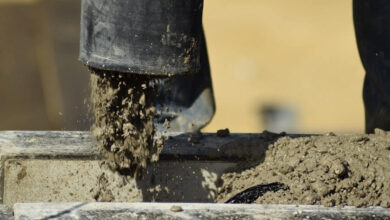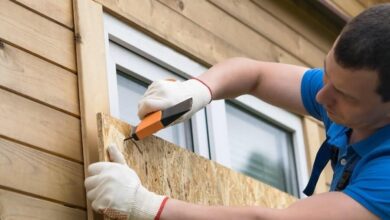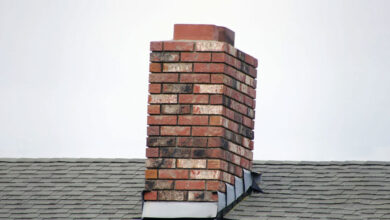8 Eco-Friendly Home Improvement Projects That Save Money and the Environment

As each day passes, it becomes increasingly important to look after our planet. It looks after us, so it’s only fair we do the same. One way you can start going green is by introducing various eco-friendly changes into your home. And the best part? It doesn’t just help the environment, but it can also save you money.
Below are eight eco-friendly home improvement projects you can consider yourself.
Switch to underfloor heating
Many homeowners rely on traditional methods like radiators and fireplaces to heat their homes during the colder months. However, these aren’t the most environmentally friendly or economical options. One alternative that many people are starting to switch to is underfloor heating.
This option has a wide range of benefits, mainly its energy efficiency. It uses a fraction of the energy of traditional methods while producing the same – or even better – results. It doesn’t release any harmful chemicals into the environment around you, and it doesn’t take up much space either. Just make sure you use a trusted engineer for the installation for the best results.
Install energy-efficient windows
Even if you install underfloor heating, you may notice that some of your warmth is missing in the winter. This could be because of your windows. Older windows tend to degrade over time, or if they weren’t properly installed, they can lead to holes or gaps that bring cold winds into your home or let the heat escape.
If you replace your older windows with those with a more energy-efficient design, you’re in for a treat. They will not only reduce heat transfer, but they will also improve insulation for you over both winter and summer, lowering your heating and cooling bills.
Upgrade to LED lighting
No one likes to sit in the dark at night, so removing all the lights in your home would be realistic. However, there is an alternative that can help you become more eco-friendly and save money. This is switching to LED lightbulbs over traditional incandescent bulbs because they consume less energy and last longer, meaning fewer replacements over the years.
When you use less electricity with LED lights and don’t have to constantly change the bulbs, you’re definitely saving money. However, still make sure you turn off the lights when you aren’t using them, as this can contribute to an even more positive change in the long run.
Seal air leaks
We’ve already mentioned how old windows with gaps and holes can reduce your home’s energy efficiency, but you should also look out for air leaks. These include gaps in other spaces, such as your doors and ducts. Even if you already have energy-efficient windows, you might want to check that they are completely sealed too.
Sealing any air leaks in your property can prevent air from coming in and out of your home, improving the insulation. You can use weatherstripping, caulking, or spray foam insulation to seal these areas and keep conditioned air from escaping.
Switch to low-flow fixtures
So far, we’ve put a big focus on energy efficiency as a way to make your home more eco-friendly and save money. However, saving water is just as important. While we don’t want to ask you to reduce your showers, you can opt to switch your faucets, showerheads, and toilets to low-flow fixtures to reduce the overall water consumption in your home significantly.
These fixtures won’t take away from enjoying a bath or shower or even just pouring a glass of water. However, it will ensure you don’t use water you don’t need. They are designed to maintain water pressure while using less water, helping you conserve your resources and lower your bills.
Start composting
You’ve probably heard a lot of people in the past tell you to start composting, and they were right to do so. It is such a simple task that can do so much for you and the planet. All you have to do is place your food scraps in a compost bin instead of the general waste, and it will reduce landfill waste and nutrient-rich soil for your garden at the same time.
Setting up a compost bin is easy. You can just find any container from your nearest store and place it in your backyard. Each time you’d normally throw away your orange peels or potato skins in the bin, move them to the compost pile instead. Once it’s all ready, you can use it to fertilize your plants!
Use eco-friendly paints
This one might surprise you, but the paint that’s currently on the walls in your house might be contributing to indoor air pollution. That’s because many traditional paints contain pollutants known as volatile organic compounds (VOCs). Each day, you could be breathing this in, and it could be harmful to your health, leading to long-term effects without knowing it.
It’s a good idea to strip the walls of the paint that’s currently on them and opt for eco-friendly paints made from natural, non-toxic ingredients instead. Not only will this improve indoor air quality in the long run, but you’ll be able to take a deep breath and have complete peace of mind that you’re fine.
Install solar panels
Last but not least, let’s turn back to power. If the constant electricity bills each month are bothering you, then why not look for an alternative power source? One of our favorites is solar energy, which you can generate from a series of panels installed on the roof of your home. It allows you to reduce your home’s reliance on fossil fuels and save you lots of money.
While you might have to invest in the solar panels, to begin with, the long-term investment does pay off. You end up saving a lot on your annual energy bills, and there’s even the opportunity for potential tax incentives and rebates. Plus it’s great for the environment. It’s a win-win situation overall.




